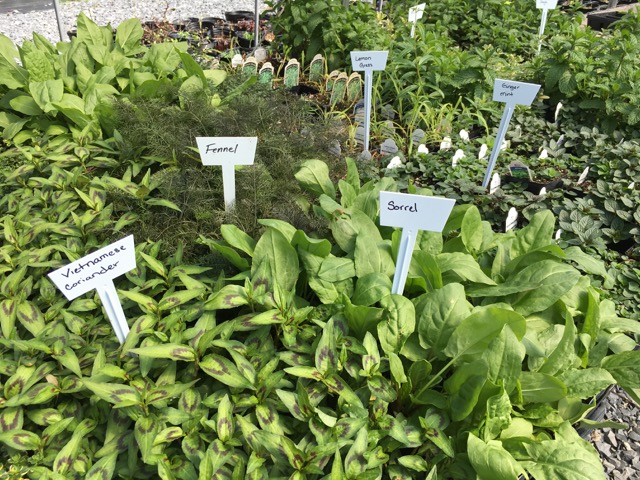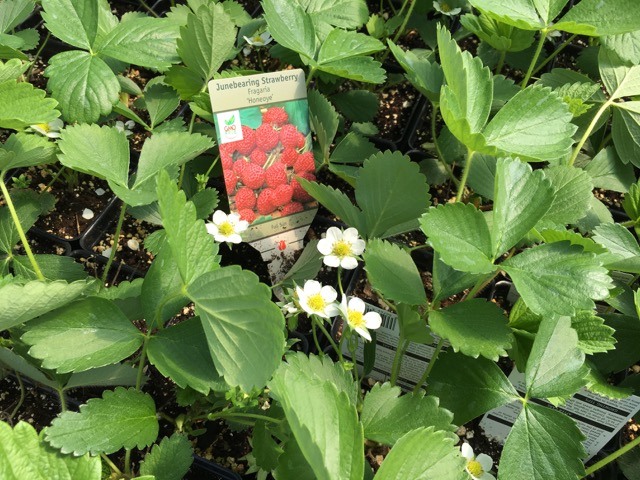What is a Potager?
Quite simply, a potager is a French kitchen garden. The traditional version of a potager garden contains symmetrical or geometrical garden beds with the vegetables planted in patterns or groups rather than in rows, often with flowers, fruit and herbs intermingled. It can be as elaborate or as simplistic as you wish.
Let it become your own creative masterpiece fitting your specific need for function, form and design. In a perfect world the potager garden is designed to be useful and visually appealing all year-round. But let’s not allow the formal rules to get in our way of having some good old-fashioned gardening fun.
To help you get ideas for your own garden, we’ve curated a potager Pinterest board with creative and beautiful images showing this specific type of garden.
History of the Potager Garden
Not to spend too much time on history, but it is always interesting to understand the starting point for these beautiful creations. In the Middle Ages, monasteries developed the first elaborate kitchen gardens. Because of their isolation from the outside world the monks were responsible for growing their own food for survival. The practical matter of needing a healthy food source and the monk’s desire to create beauty in all they purveyed as a form of praise and thanks led to these wonderful creations.
But the French aristocracy took it to a whole new level. If you have ever visited Louis XIV Palace of Versailles you know what I’m talking about. He had the most elaborate of all kitchen gardens, Le Potager du Roi. The gardens were and still are impeccable. The Palace with its Hall of Mirrors isn’t bad, but the true beauties of the estate in my opinion are the gorgeous grounds outside. That is where the magic of the era is truly preserved.
Of course, Louis XIV had a bit of money compliments of tax collection, an army of servants and laborers as resources as well as access to the best garden designers of the day. If that is not your situation why don’t we break this project down, make it a bit simpler to understand, and just have some fun and get started.
Site Selection and Preparation
You essentially want your potager garden to have well-drained, nutrient-rich soil, preferably in a sunny/ bright location. You are creating a lovely “garden room” so the golden rule of real estate applies …location matters!
Soil preparation is absolutely essential. Have your soil tested to better understand the pH balance of the soil and make amendments as needed considering the type of plants you will be growing.
If you can’t find the perfect location don’t fret. It means you will need to make some modifications to perhaps the types of plants you will be using to accommodate those slightly shady areas or moisture loving plants placed in areas that have some minor drainage issues. Be sure to give consideration to irrigation and watering needs. Also, avoid high traffic areas where the kids love to play ball or those your pets frequent.
Try to find a location that is close to your dwelling; preferably the kitchen, or one that can be seen looking out your home’s windows. It is always preferable to have a tall wall such as the side of a nicely painted garage/garden shed or brick retaining wall to anchor and clearly define the space. Look at the plot from all vantage points to ensure it is the perfect location.
Designing the Perfect Potager Garden
OK, if you have a child in high school studying geometry you are in luck and go to the head of the class. You simply need to swap his/her geometry math book, which is probably not being used anyway, and look up the definition of triangulation. Flip through the pages and get those creative juices flowing. Don’t get carried away; just get inspired to create a beautiful garden space. And if you really want to wreck your child’s day ask that they explain how some of the designs are measured and created.
Then go outside and measure your overall garden space and stake the four corners of your garden. Then head back inside and snatch some graph paper from your child’s binder and start sketching. Draw your sketch to scale considering the overall dimensions of your garden. Don’t freak out! It really isn’t that hard and you can make your design as simplistic or as complicated as you wish. Just remember at some point you need to translate that scaled drawing to your garden plot.
So what is triangulation? It is simply “the process of determining the location of a point by forming triangles to it from known points”. So if you know where the northeast and northwest corners of your garden are located (and previously staked) you can easily plot the center of your garden and the corner points of the beds you are looking to create. If all else fails get your favorite high school student out there and spend some quality time plotting.
Potager Design Tips
As you create and design your garden, keep in mind some simple guidelines:
- As previously mentioned, walls can help anchor and define the space.
- Don’t forget the concept of “negative space.” Not every square inch of your garden will be planted. You need to create pathways for ease of maintenance and navigation. Keep in mind that they should be wide enough so you can navigate freely with your garden tools and wheelbarrow. The pathways become a design element in and of themselves. They can be created by simply planting some grass or by laying some pea stone or beautiful pavers. Negative space can also be created within a planting bed by using a dark colored mulch that will contrast with the plants and assist in keeping weeds down.
- Creating manicured borders can take your design to a whole new level. Plants such as mini basil, boxwood, rue, marigolds, sage and thyme can make for stunning border edges and clearly define individual planting beds and paths within the garden. It might take some time to train them but the effort will be well worth it when you see the finished product and the impact it will have in your garden.
- Other design elements to consider include adding a focal point and some height to the center of your garden by way of a flowered trellis, fountains, or sculptures. Container pots can be a great way to incorporate annuals into the design and restrain certain herbs such as parsley that can become somewhat invasive when planted in the ground. Be sure to incorporate a nice bench or bistro table and chair where you can sit with a glass of wine after a long day in the garden and enjoy what you have created. Possibilities are limitless!
Here Comes the Fun Part, Plant Selection…
There is one golden rule of plant selection: plant what you like to grow and enjoy incorporating into your cooking and be sure that it will thrive in your hardiness zone.
Herbs are wonderful flavor boosters, but don’t forget flowers such as nasturtiums and violets can add tremendous color to a salad or be crystalized to decorate a cake. And of course you are always looking for creative ways to incorporate veggies into your young mathematician’s diet.
Consider plants that are nicely shaped, and incorporate texture, color, and form into the garden space when planted. Remember to consider the plant size when fully grown. Also think about what you want the garden to look like during different seasons of the year. For example, incorporating plants with an autumn hue and brightly colored foliage in late season can make for a beautiful presentation in the fall. Purple cabbage is a great example. Dark colored bark covered with snow and red berries in the winter can be just as stunning as greens and flowers during the warm summer months. Be creative and take a chance. It is all about the gardening journey! Be a risk taker and have fun creating an aesthetically pleasing display in your potager garden.
Balet Flowers & Design has a wonderful selection of herbs and flowering shrubbery already started for you in our greenhouse. We also have a lovely selection of tufa planters and pottery at our design center. Suzanne Balet Haight, our owner, even conducts classes periodically at our garden center on how to make hypertufa containers on your own (the next class is on Sunday, May 21st). You can also check out Suzanne’s beautiful pottery creations while visiting the garden center.
Why not make out your listing of plants, flowers and shrubs and stop by and visit us at Balet Flowers & Design? We would love to see what you have planned and perhaps throw out a few suggestions of our own to make your potager garden dreams come true.
– Bob Burke, Balet Flowers & Design


